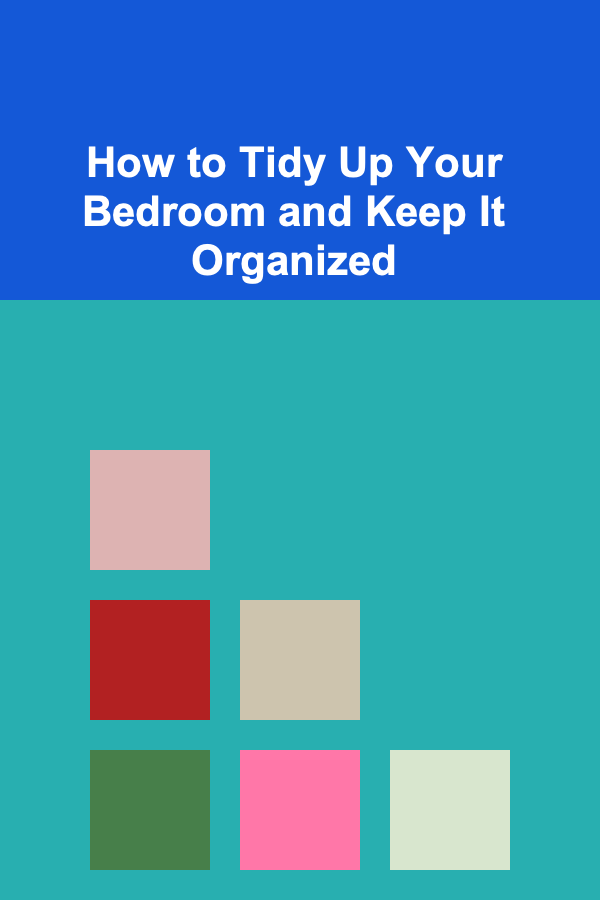
How to Clean and Care for Your Upholstery
ebook include PDF & Audio bundle (Micro Guide)
$12.99$5.99
Limited Time Offer! Order within the next:

Upholstered furniture can add beauty, comfort, and style to any room. However, without proper care, upholstery can quickly lose its appeal. Over time, fabric and cushions accumulate dust, stains, and dirt, which can degrade their appearance and comfort. Whether your furniture is made from delicate fabrics, leather, or synthetic materials, learning how to clean and care for it properly is essential to maintaining its longevity and aesthetic value.
In this comprehensive guide, we will explore various methods for cleaning and caring for your upholstery. From regular maintenance to handling stains and spills, we will provide you with all the knowledge you need to keep your upholstered furniture looking great and feeling comfortable for years to come.
Understanding Different Upholstery Fabrics
Before you start cleaning your upholstery, it's crucial to understand the different types of fabrics commonly used for furniture. Each material requires specific care, and using the wrong cleaning method could cause irreversible damage. Below are some of the most common upholstery fabrics and their characteristics:
1.1. Fabric Upholstery
Fabric upholstery is made from natural or synthetic fibers. It's often chosen for its versatility, softness, and range of patterns and colors. The most common fabric types are:
- Cotton: Known for its soft texture and breathability, cotton is a popular choice. However, it can stain easily and requires regular cleaning to maintain its appearance.
- Linen: Linen is another natural fabric with a light, fresh look. It tends to wrinkle and can soil quickly, but it's durable and easy to maintain with regular vacuuming and spot cleaning.
- Velvet: Velvet upholstery has a luxurious look and feel, but it can attract dust and dirt due to its plush texture. Special care is needed to avoid crushing the pile.
- Microfiber: Microfiber is a synthetic material that is both durable and stain-resistant. It's an excellent choice for homes with children or pets, but it still requires regular cleaning to maintain its appearance.
- Polyester and Nylon: These synthetic fabrics are durable, resistant to stains, and relatively easy to clean. They can withstand frequent cleaning but may fade over time.
1.2. Leather Upholstery
Leather is a luxurious and durable material that is easy to clean but can suffer from cracks, dryness, and discoloration if not cared for properly. It is highly resistant to stains but can show scratches or other damage over time.
1.3. Synthetic Upholstery
Synthetic materials, such as vinyl, faux leather, and blended fabrics, are often more affordable and resistant to stains than natural fibers. However, they can degrade if not cared for properly, especially if exposed to direct sunlight or harsh cleaning products.
Basic Upholstery Maintenance
Regular maintenance is essential for prolonging the life of your upholstered furniture. Simple actions can prevent dirt and dust buildup, keeping your furniture in great condition.
2.1. Vacuuming Upholstered Furniture
Vacuuming is the most effective way to remove dust, dirt, and debris from your upholstery. It also helps prevent particles from embedding in the fabric and causing damage over time. Use the upholstery attachment on your vacuum cleaner, and be sure to get into all the crevices, seams, and corners.
- Frequency: Vacuum your upholstered furniture at least once a week, or more often if you have pets or young children.
- Technique: Use short, gentle strokes to lift debris without damaging the fabric. For delicate fabrics, consider using a soft brush attachment to avoid causing wear.
2.2. Fluffing Cushions and Pillows
Fluffing your cushions and pillows helps them retain their shape and prevents sagging. Over time, frequent use can cause cushions to become flattened, but regular fluffing can minimize this effect.
- How to fluff cushions: Grab both ends of the cushion and gently squeeze and pat it into shape. Flip cushions periodically to ensure even wear and to prevent one side from getting worn out more quickly than the other.
2.3. Rotate Cushions
If your furniture has removable cushions, rotating them regularly will help distribute the wear and prevent specific areas from becoming worn down prematurely. It's a good idea to rotate the cushions every few months.
2.4. Protect from Sunlight
Direct sunlight can cause fabrics, particularly natural fibers like cotton and linen, to fade over time. Leather can also dry out and crack if exposed to prolonged sunlight. To protect your upholstery, consider using blinds, curtains, or window films to limit exposure to sunlight. You can also rotate your cushions and furniture regularly to ensure even exposure.
Dealing with Stains and Spills
Stains and spills are inevitable, but the key to keeping your upholstery in good shape is to address them quickly and appropriately. Different stains require different cleaning methods, and using the wrong approach can worsen the damage.
3.1. General Tips for Stain Removal
- Act Quickly: The sooner you can address the stain, the better. Blot, don't rub, the stain with a clean cloth to absorb as much liquid as possible.
- Avoid Harsh Chemicals: Always test a cleaning solution on a hidden area of the fabric before applying it to the entire stain. Harsh chemicals can damage the fabric or discolor the upholstery.
- Work from the Outside In: When removing a stain, work from the edges toward the center. This will prevent the stain from spreading further.
3.2. Removing Common Stains
- Food and Drink Stains: For food or drink stains, such as coffee or wine, blot the area with a cloth to soak up any excess liquid. Then, mix a solution of mild dish soap and warm water and gently clean the area. Rinse with clean water and blot again to remove any residue.
- Grease Stains: Grease stains can be particularly tricky to remove. Sprinkle cornstarch or baking soda on the stain to absorb the grease. After letting it sit for 15--20 minutes, vacuum up the powder, and then clean the area with a mild detergent solution.
- Ink Stains: Ink stains can be difficult to remove, but you can use rubbing alcohol or a commercial ink remover. Dab the solution onto the stain with a clean cloth, and blot until the ink is gone.
- Pet Stains: Pet stains require prompt attention. Blot the area, and then clean it with a mixture of vinegar and water. For lingering odors, use an enzymatic cleaner designed to break down pet waste.
3.3. Professional Upholstery Cleaning
For more stubborn stains or delicate fabrics, it's a good idea to hire a professional upholstery cleaning service. Professionals have access to specialized equipment and cleaning solutions that can deep clean your furniture without causing damage.
Cleaning Upholstery According to Fabric Type
4.1. Cleaning Fabric Upholstery
For most fabric upholstery, a regular vacuuming routine combined with spot cleaning should be sufficient. However, if your fabric needs a deeper clean, follow these guidelines:
- Mild Detergent Solution: Mix a small amount of mild dish soap with warm water. Use a clean cloth or sponge to apply the solution to the stain, working from the edges toward the center.
- Steam Cleaning: For tough dirt or grime, you can use a steam cleaner on fabric upholstery. Steam helps lift dirt without using harsh chemicals, but make sure the fabric is steam-cleanable.
4.2. Cleaning Leather Upholstery
Leather requires special care to prevent cracking and discoloration. Here's how to clean and care for your leather upholstery:
- Dust Regularly: Use a microfiber cloth to remove dust from your leather furniture. Avoid using rough materials that can scratch the surface.
- Mild Soap and Water: Mix a small amount of mild soap with water. Use a soft cloth to wipe down the surface. Be sure not to saturate the leather.
- Leather Conditioner: After cleaning, apply a leather conditioner to keep the material supple. Leather conditioners prevent the material from drying out and cracking over time.
4.3. Cleaning Synthetic Upholstery
Synthetic materials like microfiber, vinyl, and faux leather are generally easier to clean than natural fibers. Here's how to maintain them:
- Microfiber: For microfiber upholstery, use a vacuum with an upholstery attachment to remove dirt and debris. To clean stains, mix rubbing alcohol and water in equal parts and spray the solution on the affected area. Gently rub with a soft brush to lift the stain.
- Vinyl and Faux Leather: Clean synthetic materials with a damp cloth and a mild detergent. Be sure to dry the surface afterward to prevent moisture buildup.
Preventive Measures and Upholstery Care Tips
Prevention is always better than cure, and taking steps to protect your upholstery can help minimize the need for frequent cleaning.
5.1. Use Upholstery Covers or Slipcovers
Using slipcovers can protect your furniture from spills, stains, and wear and tear. Slipcovers can easily be removed and washed, making them a convenient option for households with children or pets.
5.2. Use Fabric Protectors
Applying a fabric protector, such as Scotchgard, can create an invisible barrier that helps repel stains and dirt. These protectors are particularly useful for light-colored fabrics or in homes where spills are frequent.
5.3. Limit Contact with Pets and Children
While it's impossible to prevent pets and children from using the furniture, you can limit their contact with certain pieces. Consider using pet-friendly furniture or setting boundaries for where children and pets are allowed to sit.
5.4. Avoid Eating and Drinking on Upholstered Furniture
To minimize spills and stains, avoid eating or drinking on upholstered furniture. If this is not feasible, be sure to have cleaning supplies on hand in case of an accident.
Conclusion
Proper upholstery care is essential for keeping your furniture looking good and extending its lifespan. Regular maintenance, such as vacuuming, rotating cushions, and addressing spills quickly, can prevent dirt buildup and preserve the material. By understanding the specific cleaning requirements for different upholstery fabrics, you can ensure your furniture stays in excellent condition for years to come. With a little attention and care, your upholstery can continue to add beauty and comfort to your home for a long time.

How to Build a Strong Brand for Your Bicycle Delivery Service
Read More
How to Plan a Cozy Indoor Picnic Party at Home
Read More
How to Repurpose Old Furniture for a Stylish Home
Read More
How to Tidy Up Your Bedroom and Keep It Organized
Read More
How to Use Labels to Keep Your Maintenance Supplies Organized
Read More
How to Use Under-Bed Storage to Maximize Bedroom Space
Read MoreOther Products

How to Build a Strong Brand for Your Bicycle Delivery Service
Read More
How to Plan a Cozy Indoor Picnic Party at Home
Read More
How to Repurpose Old Furniture for a Stylish Home
Read More
How to Tidy Up Your Bedroom and Keep It Organized
Read More
How to Use Labels to Keep Your Maintenance Supplies Organized
Read More